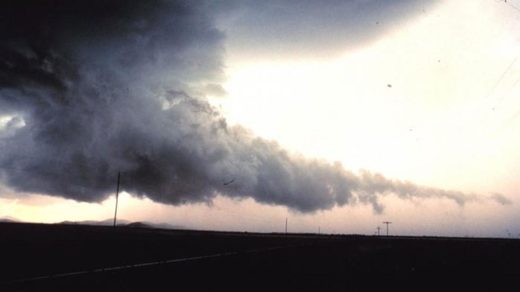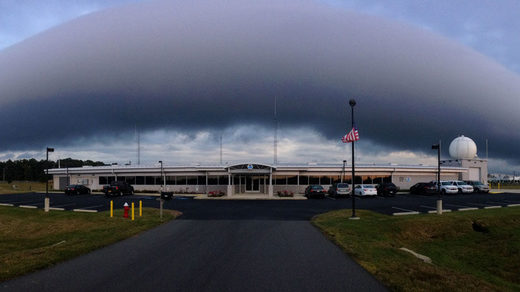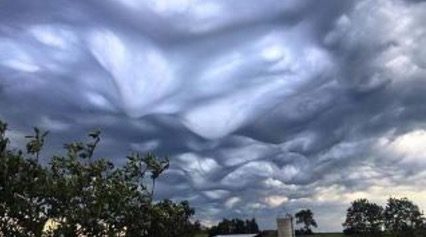New cloud classifications added for the first time in 30 years
Chris Dolce
The Weather ChannelWed, 22 Mar 2017 16:30 UTC
Asperitas and murus are just two of the names you'll see among several new classifications added to an updated cloud reference released this week by the World Meteorological Organization (WMO).
This update is the first in 30 years for the International Cloud Atlas, which the WMO calls "the global reference for observing and identifying clouds."
A new cloud species has been added to the atlas called volutus, more commonly known as a roll cloud by meteorologists. Cloud species are subdivisions of the 10 basic cloud "genera," the WMO says.
Roll/volutus clouds are a relatively rare, low-level, horizontal, tube-shaped cloud. Although they are associated with a thunderstorm (or occasionally a cold front), they are completely detached from the base of the cumulonimbus cloud. Volutus is a Latin term for rolled, which perfectly matches their appearance.
Five new supplementary features have also been added to the updated cloud atlas. Those new names include asperitas, cavum, cauda, fluctus, and murus, all of which are currently known as other more common names by sky watchers.
Asperitas, Latin for wave-like and roughness, has been added to the atlas thanks to the work of the Cloud Appreciation Society.
"Asperitas was first identified with the help of citizen science, enabled by modern technology. When Cloud Appreciation Society members send us photographs of dramatic skies from around the world, it is possible to spot patterns. This is how the proposal for a new classification came about, and we are delighted the WMO has chosen to include it in their definitive reference work for cloud classification," said Gavin Pretor-Pinney, founder of the Cloud Appreciation Society.
The other four new supplementary features now in the atlas also have more commonly known names among meteorologists.
Murus and cauda are a wall cloud and tail cloud, respectively. They are features of cumulonimbus clouds, which are associated with thunderstorms. Wall clouds are a lowering, rotating cloud base and sometimes the location where tornadoes can develop. A tail cloud extends horizontally away from the wall cloud and illustrates air feeding into the storm.

© NOAA Photo Library, NOAA Central Library; OAR/ERL/National Severe Storms Laboratory (NSSL)
Wall Cloud with a Tail Cloud
Wall Cloud with a Tail Cloud
Clouds that formed or grew from localized factors have also been added to the atlas. Among the five new "special clouds" is homogenitus, which is a contrail created by airplanes.
The International Cloud Atlas was first published in the 19th century and was last updated in 1987. This new 2017 version will primarily be accessible through the internet, but it could be published in print later.
"The International Cloud Atlas is the single most authoritative and comprehensive reference for identifying clouds. Its reputation is legendary among cloud enthusiasts and it serves as an essential training tool for professionals working in meteorological services, and in sectors such as aviation and shipping," said WMO Secretary-General Petteri Taalas.






No comments:
Post a Comment
Note: only a member of this blog may post a comment.